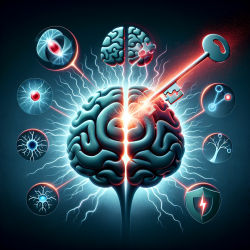The prevalence of direct self-injurious behavior (D-SIB) among adolescents is a growing concern within educational settings. Recent research highlights significant differences in D-SIB prevalence between vocational and high school students. This blog post delves into these findings and offers insights for practitioners aiming to enhance their skills in supporting adolescents exhibiting these behaviors.
The Research Findings
The study titled Direct Self-Injurious Behavior (D-SIB) and Life Events among Vocational School and High School Students provides a comprehensive analysis of D-SIB prevalence among different student populations. The research indicates that vocational school students exhibit a higher lifetime prevalence of D-SIB (29.4%) compared to their high school counterparts (17.2%). This significant difference underscores the need for targeted interventions tailored to the unique challenges faced by vocational school students.
Implications for Practitioners
Practitioners working with adolescents should consider the following strategies to address D-SIB effectively:
- Understand the Context: Recognize that vocational school students often come from lower socioeconomic backgrounds, which may contribute to higher stress levels and increased vulnerability to D-SIB.
- Tailor Interventions: Design prevention and intervention programs that consider the specific life events and stressors prevalent among vocational school students, such as family changes or peer relationships.
- Collaborate with Schools: Work closely with educational institutions to implement comprehensive mental health programs that include screening for D-SIB and providing immediate support for at-risk students.
- Encourage Further Research: Stay informed about ongoing research in adolescent mental health to continually refine intervention strategies and improve outcomes for students.
The Role of Life Events
The study also highlights differences in life events experienced by vocational versus high school students. Vocational students reported more frequent occurrences of significant life changes, such as parental divorce or the death of a close friend. These events are critical factors contributing to the onset of D-SIB and should be integral components of any prevention strategy.
Moving Forward
To effectively support adolescents struggling with D-SIB, practitioners must adopt a holistic approach that considers both individual and environmental factors. By leveraging research findings and fostering collaboration with educational institutions, practitioners can play a pivotal role in reducing the incidence of self-injury among vulnerable student populations.
For those interested in further exploring this topic, I encourage you to read the original research paper: Direct Self-Injurious Behavior (D-SIB) and Life Events among Vocational School and High School Students.










